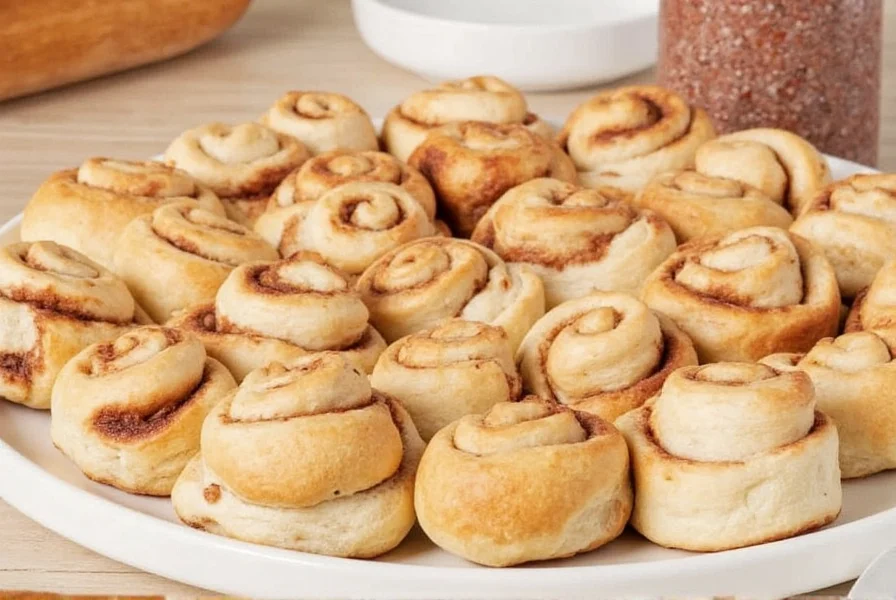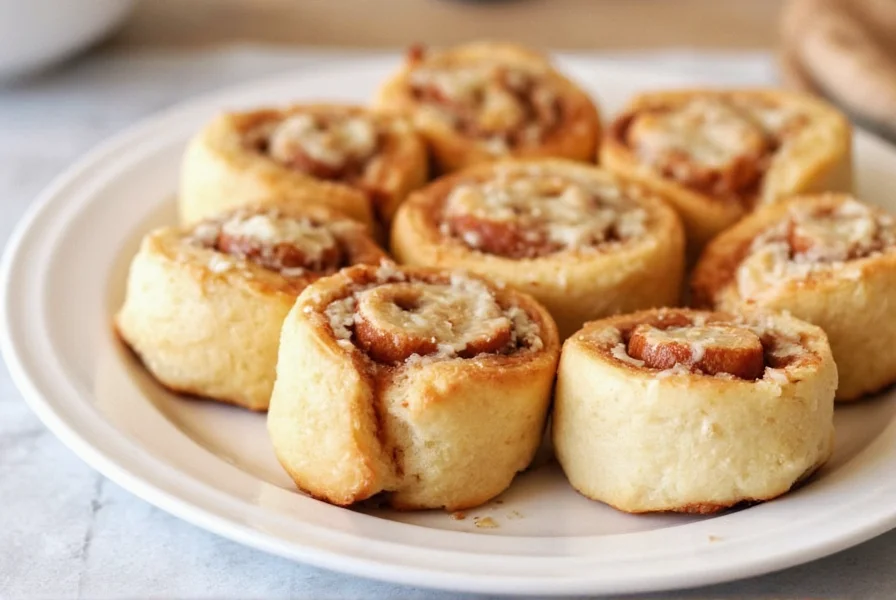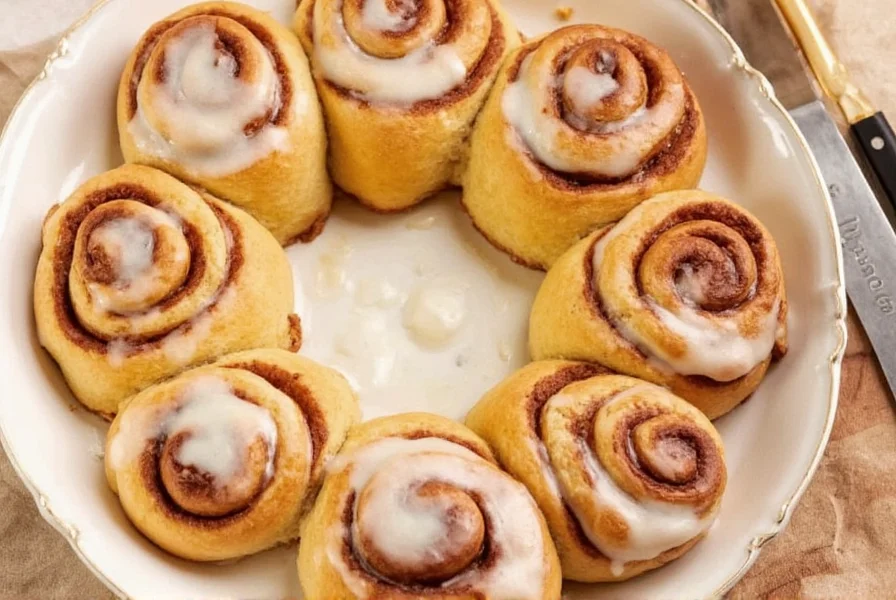Why This Homemade Cinnamon Rolls Recipe Works
Creating bakery-quality cinnamon rolls at home requires understanding the science behind yeast dough. Unlike many online recipes that use excessive sugar or incorrect flour ratios, this tested formula balances hydration and gluten development for optimal texture. The key differentiators in this best homemade cinnamon rolls recipe include:
- Temperature-controlled dough - Maintaining 75-80°F during rising prevents yeast shock
- Butter-infused filling - Creates distinct flavor layers without leaking during baking
- Proper flour measurement technique - Spoon-and-level method prevents dense rolls
- Controlled proofing time - Exactly 60-75 minutes for ideal air pocket structure

Ingredients for Perfect Cinnamon Rolls
Accurate measurements are critical for yeast dough success. Use a kitchen scale for best results, or follow the spoon-and-level method for cup measurements.
| Ingredient | Measurement | Professional Tip |
|---|---|---|
| All-purpose flour | 3 ½ cups (440g) | Measure by spooning into cup then leveling |
| Active dry yeast | 2 ¼ teaspoons (7g) | Test viability in warm liquid first |
| Whole milk | ⅔ cup (160ml) | Warmed to 110°F - not hot |
| Unsalted butter | ⅓ cup (75g), melted | Cool to room temperature before adding |
| Granulated sugar | ⅓ cup (65g) | Feeds yeast without inhibiting growth |
| Eggs | 2 large | Room temperature for even mixing |
| Salt | 1 ½ teaspoons | Added after yeast activation |
Filling and Frosting Components
The signature flavor comes from this balanced filling formula that won't leak during baking:
- Cinnamon filling: ½ cup (100g) packed brown sugar + 2 tablespoons ground cinnamon + ¼ cup (55g) softened butter
- Cream cheese frosting: 4 oz cream cheese (softened) + ¼ cup (55g) butter + 1 ½ cups powdered sugar + 1 teaspoon vanilla extract + 1-2 tablespoons milk
Step-by-Step Instructions for Success
Dough Preparation (20 minutes)
- Activate yeast: Combine warm milk (110°F), 1 tablespoon sugar, and yeast. Wait 5-7 minutes until foamy.
- Mix wet ingredients: Whisk melted butter, eggs, and remaining sugar into yeast mixture.
- Combine dry ingredients: Whisk flour and salt in separate bowl.
- Form dough: Gradually add dry ingredients to wet, mixing until shaggy dough forms.
- Knead: Turn onto floured surface and knead 8-10 minutes until smooth and elastic (or use dough hook 6-8 minutes).
First Rise and Shaping (1 hour 15 minutes)
- First rise: Place dough in greased bowl, cover, and let rise at 75-80°F for 60 minutes until doubled.
- Prepare filling: Mix brown sugar and cinnamon. Soften butter to spreadable consistency.
- Roll dough: Punch down risen dough and roll into 16x12 inch rectangle on floured surface.
- Apply filling: Spread softened butter evenly, then sprinkle cinnamon-sugar mixture.
- Roll tightly: Starting from long edge, roll dough into log and pinch seam closed.
Baking and Finishing (25 minutes)
- Cut rolls: Using dental floss (not knife), cut log into 12 equal pieces.
- Second rise: Place in greased 9x13 inch pan, cover, and rise 30 minutes until puffy.
- Bake: 18-20 minutes at 375°F until golden brown (internal temperature 190°F).
- Cool: Let rest 15 minutes before frosting.
- Apply frosting: Mix frosting ingredients until smooth and spread immediately.

Troubleshooting Common Cinnamon Roll Problems
Even experienced bakers encounter issues with homemade cinnamon rolls from scratch. Here's how to fix them:
- Dense rolls: Caused by too much flour or dead yeast. Always measure flour properly and test yeast viability first.
- Filling leakage: Results from melted butter or overfilling. Use softened (not melted) butter and don't exceed ¼ cup filling ingredients.
- Uneven rising: Occurs in drafty areas. Maintain consistent 75-80°F environment during proofing.
- Burnt bottoms: Place baking pan on middle oven rack and use light-colored metal pan.
- Tough texture: Over-kneading develops too much gluten. Stop when dough passes windowpane test.
Make-Ahead and Storage Tips
This easy cinnamon roll recipe can be prepared in advance:
- Refrigerate after shaping: Cover rolls in pan and refrigerate up to 18 hours. Remove 1 hour before baking.
- Freeze unbaked: Flash freeze shaped rolls, then store in freezer bag up to 3 months. Bake from frozen (add 5-7 minutes).
- Storage: Keep frosted rolls covered at room temperature 2 days or refrigerate up to 5 days.
- Reheating: Warm individual rolls 10-15 seconds in microwave with damp paper towel.
Delicious Variations to Try
Once you've mastered the classic cinnamon roll recipe, experiment with these popular twists:
- Apple cinnamon rolls: Add ½ cup finely diced apples to filling
- Streusel topping: Replace frosting with crumb topping (¼ cup flour, ¼ cup brown sugar, 2 tbsp cold butter)
- Maple glaze: Substitute maple syrup for milk in frosting
- Chocolate swirl: Add ¼ cup cocoa powder to filling mixture
- Overnight cinnamon rolls: Refrigerate after first rise for slower fermentation
Frequently Asked Questions
Can I use instant yeast instead of active dry yeast in this cinnamon roll recipe?
Yes, you can substitute instant yeast 1:1 for active dry yeast. The main difference is instant yeast can be mixed directly with dry ingredients without proofing. If using instant yeast, reduce liquid temperature to 120-130°F and expect slightly faster rising times (about 15-20% quicker).
Why did my cinnamon roll dough not rise properly?
Most rising failures come from three causes: expired yeast (always test viability first), liquid temperatures above 130°F (which kills yeast), or a cold environment during proofing. Ensure your yeast is fresh, liquids are 105-115°F, and dough rests in a draft-free area between 75-80°F. High-altitude bakers may need to reduce yeast by 25%.
How can I prevent my cinnamon filling from leaking out during baking?
To prevent cinnamon roll filling leakage, use softened (not melted) butter for the filling, don't overfill (max ¼ cup butter + ½ cup sugar mixture), and ensure the roll seam is pinched tightly closed. Chilling shaped rolls for 10 minutes before the second rise helps solidify the filling. Using a light-colored metal pan (not dark nonstick) also prevents excessive bottom heat that causes leakage.
What's the ideal internal temperature for perfectly baked cinnamon rolls?
The perfect internal temperature for soft and fluffy cinnamon rolls is 190°F when measured with an instant-read thermometer. At this temperature, the starches have properly gelatinized while maintaining moisture. Baking beyond 195°F causes excessive moisture loss, resulting in dry rolls. Always check internal temperature in the center of a roll, not just judging by appearance.
Can I make this homemade cinnamon rolls recipe gluten-free?
Yes, but with significant modifications. Use a 1:1 gluten-free flour blend containing xanthan gum, increase liquid by 2-3 tablespoons, and add 1 teaspoon apple cider vinegar to improve rise. Gluten-free cinnamon rolls require shorter mixing (overmixing causes gumminess) and typically need 10-15% longer rising time. The texture will be more tender and less chewy than traditional rolls.











 浙公网安备
33010002000092号
浙公网安备
33010002000092号 浙B2-20120091-4
浙B2-20120091-4